PEER COURT PROGRAM
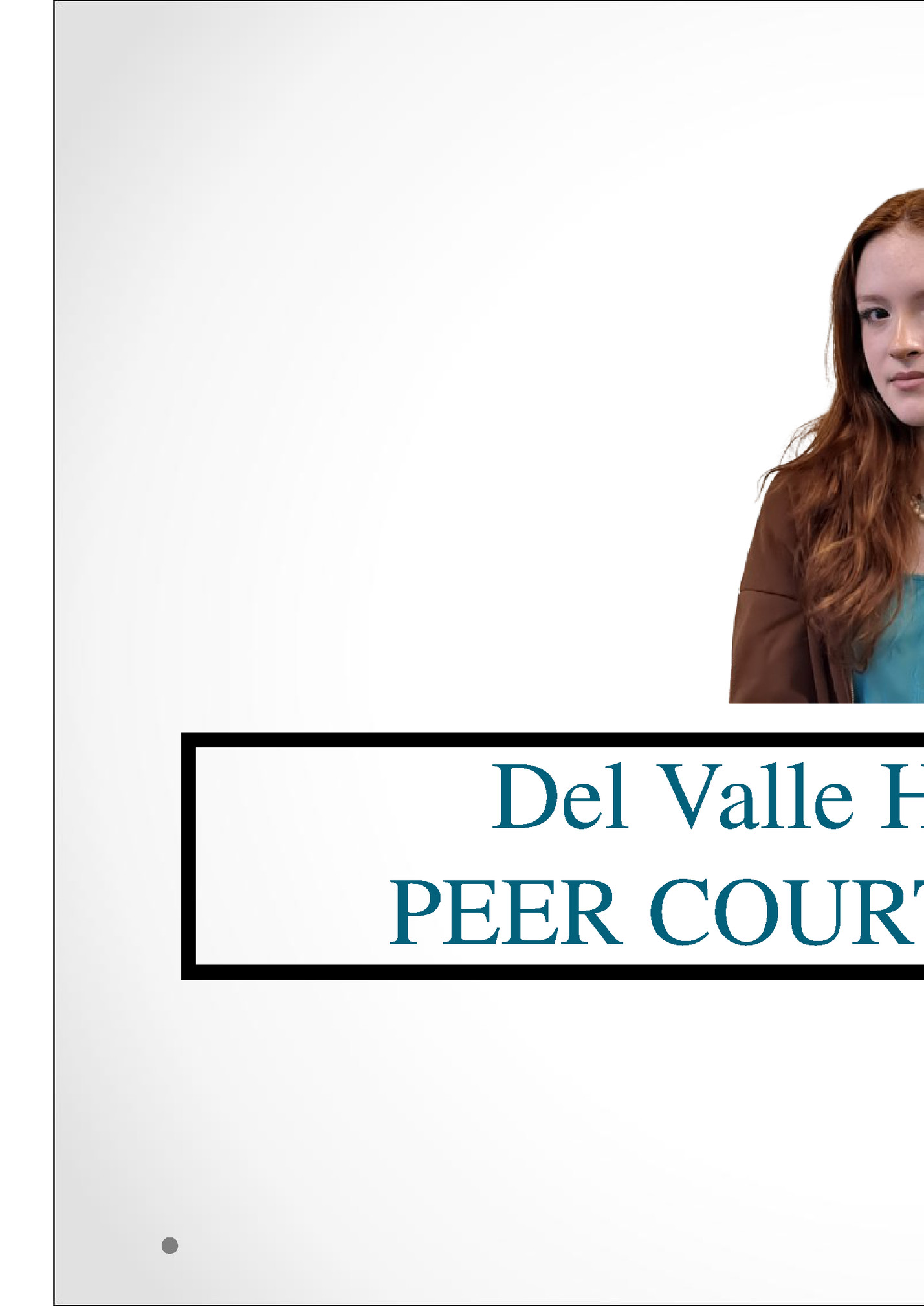
Youth Court Peer Court Student Court
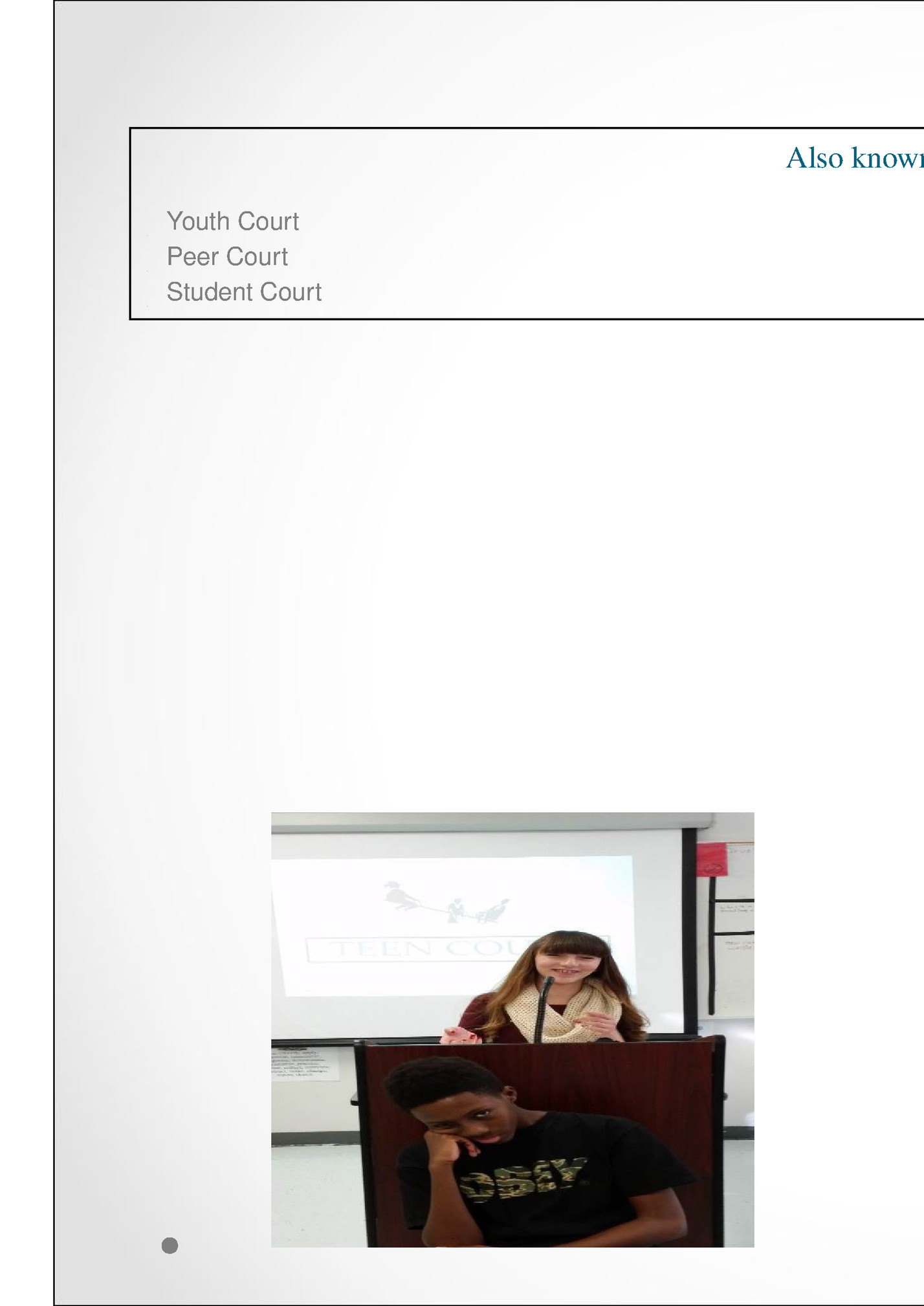
A program in which youth are sentenced by their peers Respondents/defendants 1117 years old Youth Volunteers 1318 years old

& Community A better understanding of the juvenile justice system. A better understanding of recurring delinquency problems among juveniles. An intimate look at the judicial system. Exposure to careers in law/court related professions. Exposure to the serious consequences of juvenile delinquency. A meaningful role in helping restore the community.
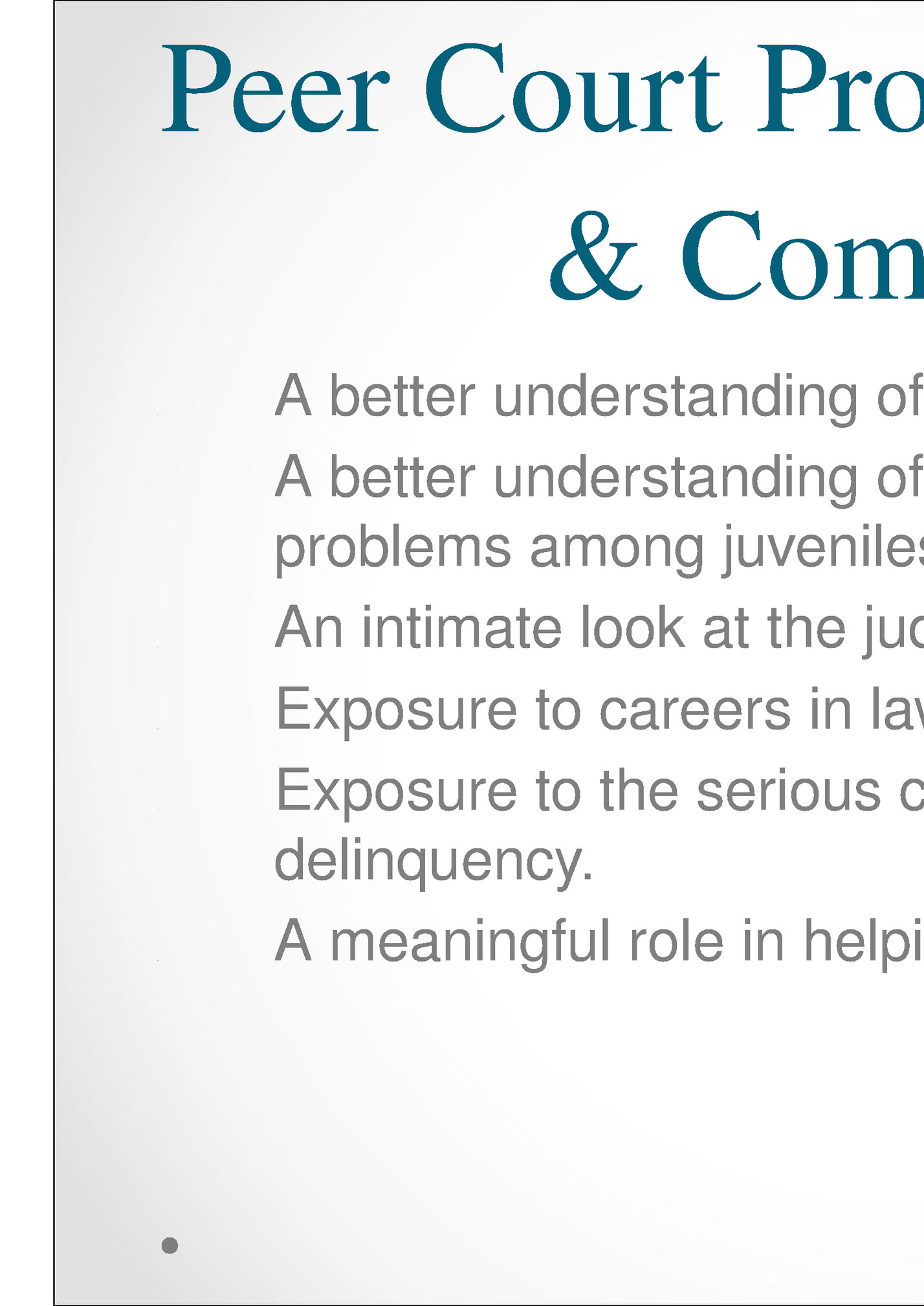
Peer Court is a form of restorative justice. Under this philosophy, victims, their families, and the community are seen as the recipients of harm caused by an offender. Restorative justice has roots in Native American community healing practices. Peer Courts are rooted in the belief that the students who volunteer to participate as jurors, clerks, and bailiffs, and the juvenile offender will benefit from participation. The premise is that a juvenile offender will not continue delinquent behavior after participating in a judicial process in which a jury of their peers determines that he/she violated the law and recommends an appropriate consequence.
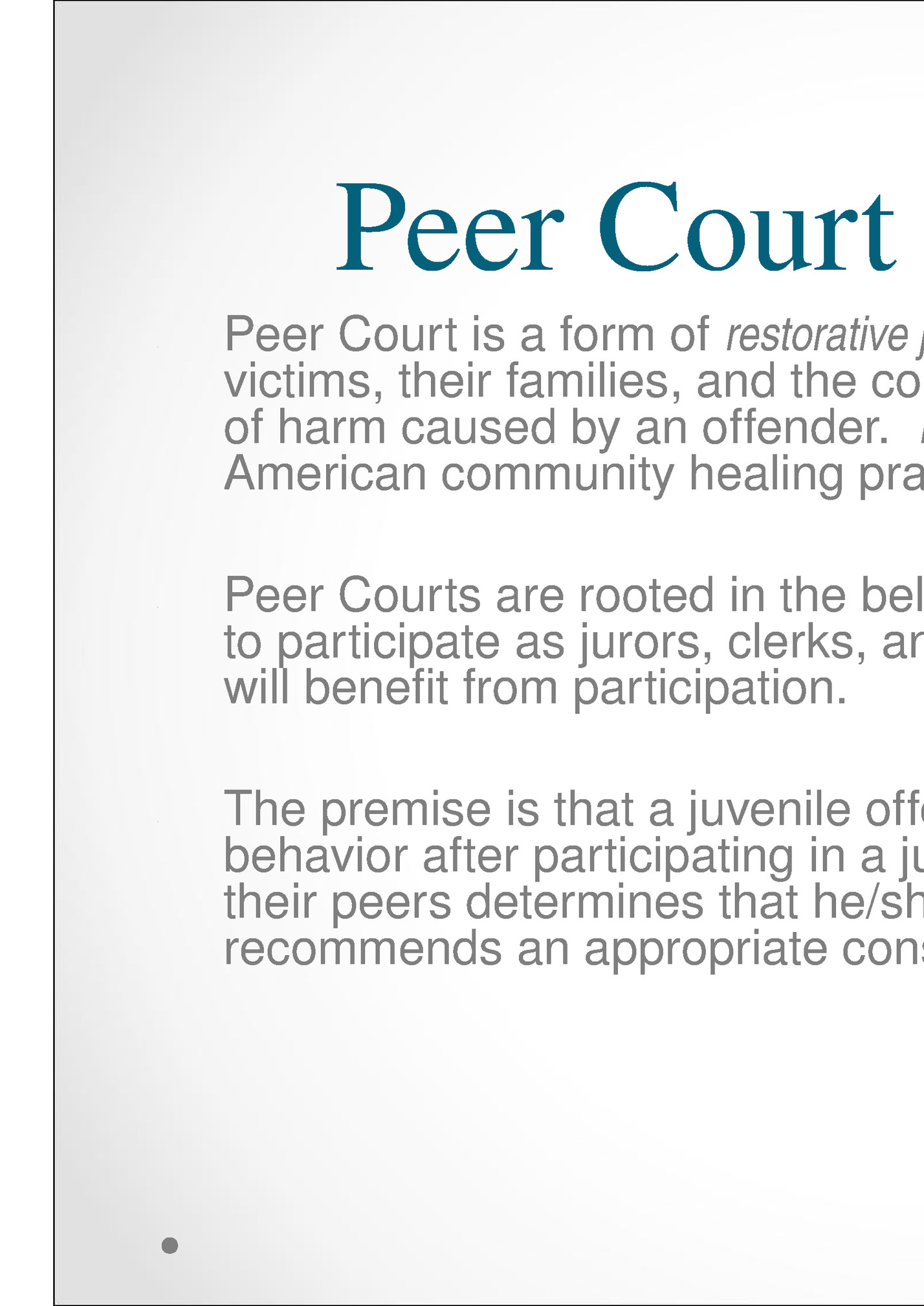
the Community An early intervention and prevention program A way to hold juvenile offenders accountable A means for educating youth on the legal and judicial system/builds competencies A meaningful forum for youth to practice and enhance leadership skills Peers can use volunteer time for graduation community service hours
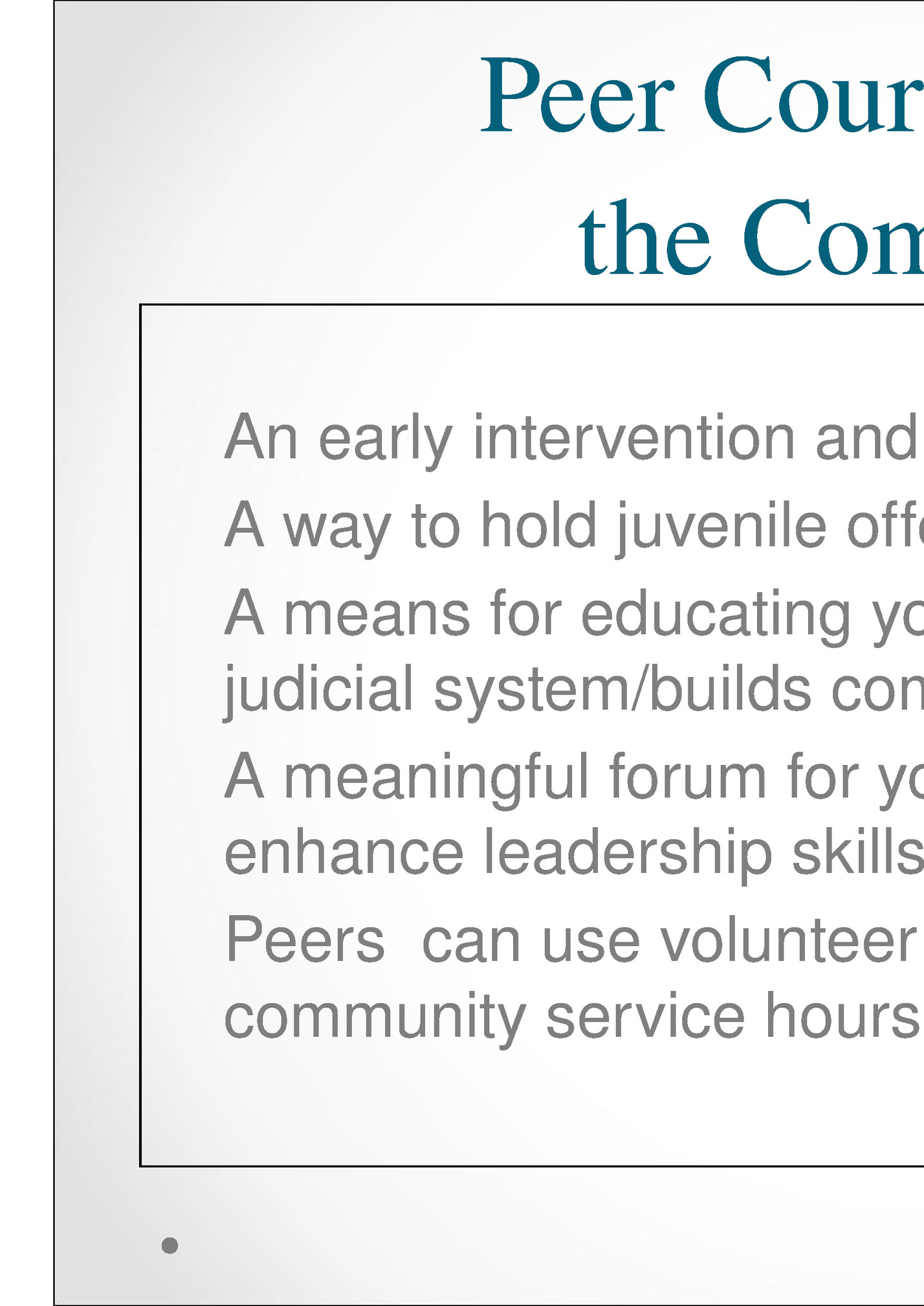
the Community Immediate consequences for first time offenders Gives young people the opportunity to participate in the decisionmaking process for dealing with juvenile delinquency Promotes a healthy attitude toward authority and eliminates fear in dealing with the Court system Capitalizes on peer influence An avenue for building ties between youth and their community
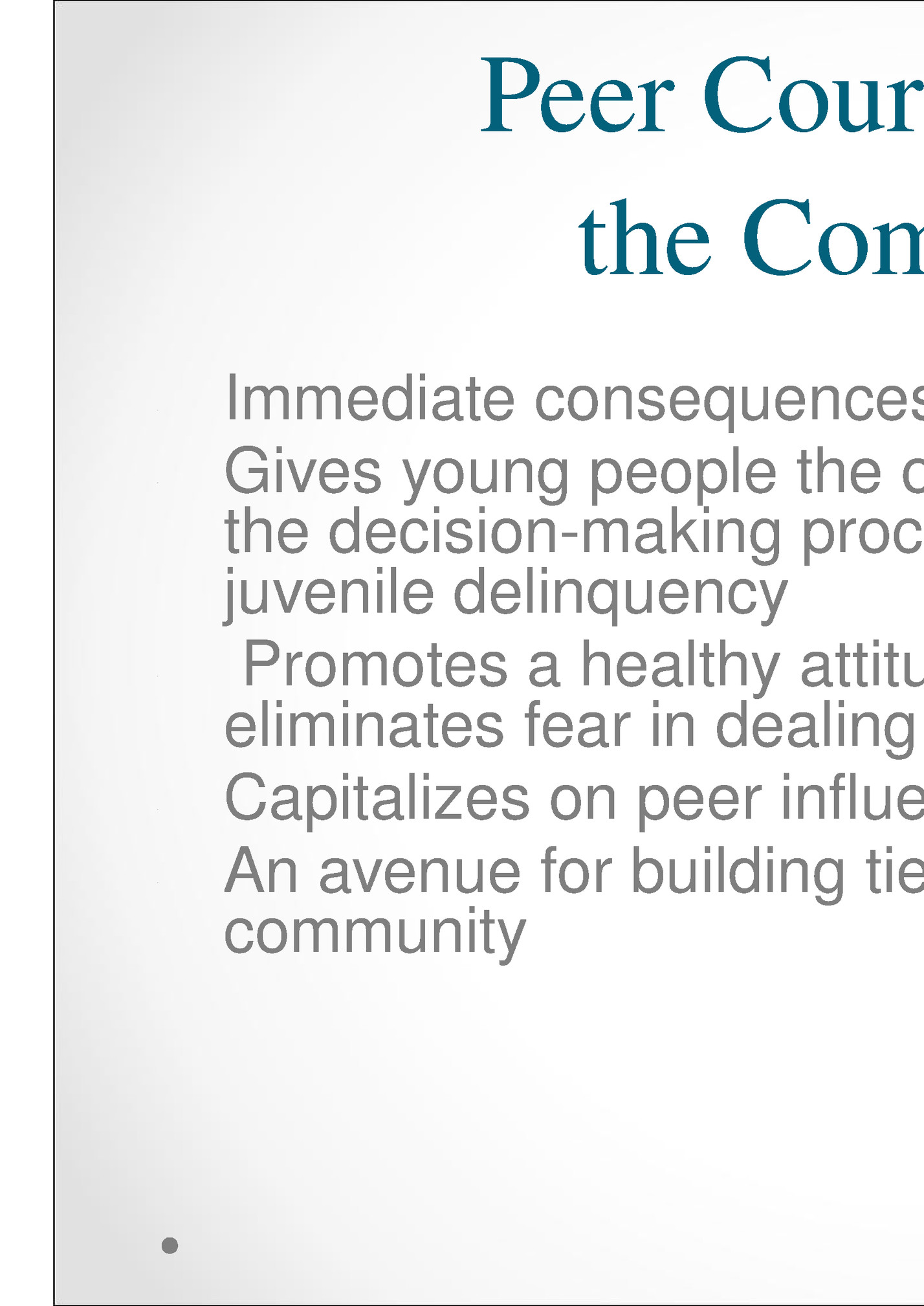
the Community If youth do not see themselves as being bonded to the social contract that the adult society adheres to, they will see no reason to follow it. Calhoun, J.A. (1988). Violence, Youth and a Way Out. Washington, DC: National Crime Prevention

Function as diversion programs Accept firsttime offenders Accept misdemeanor, nonviolent cases Require youth to admit to the charge and voluntarily participate in the program Require parental consent for the youth to participate
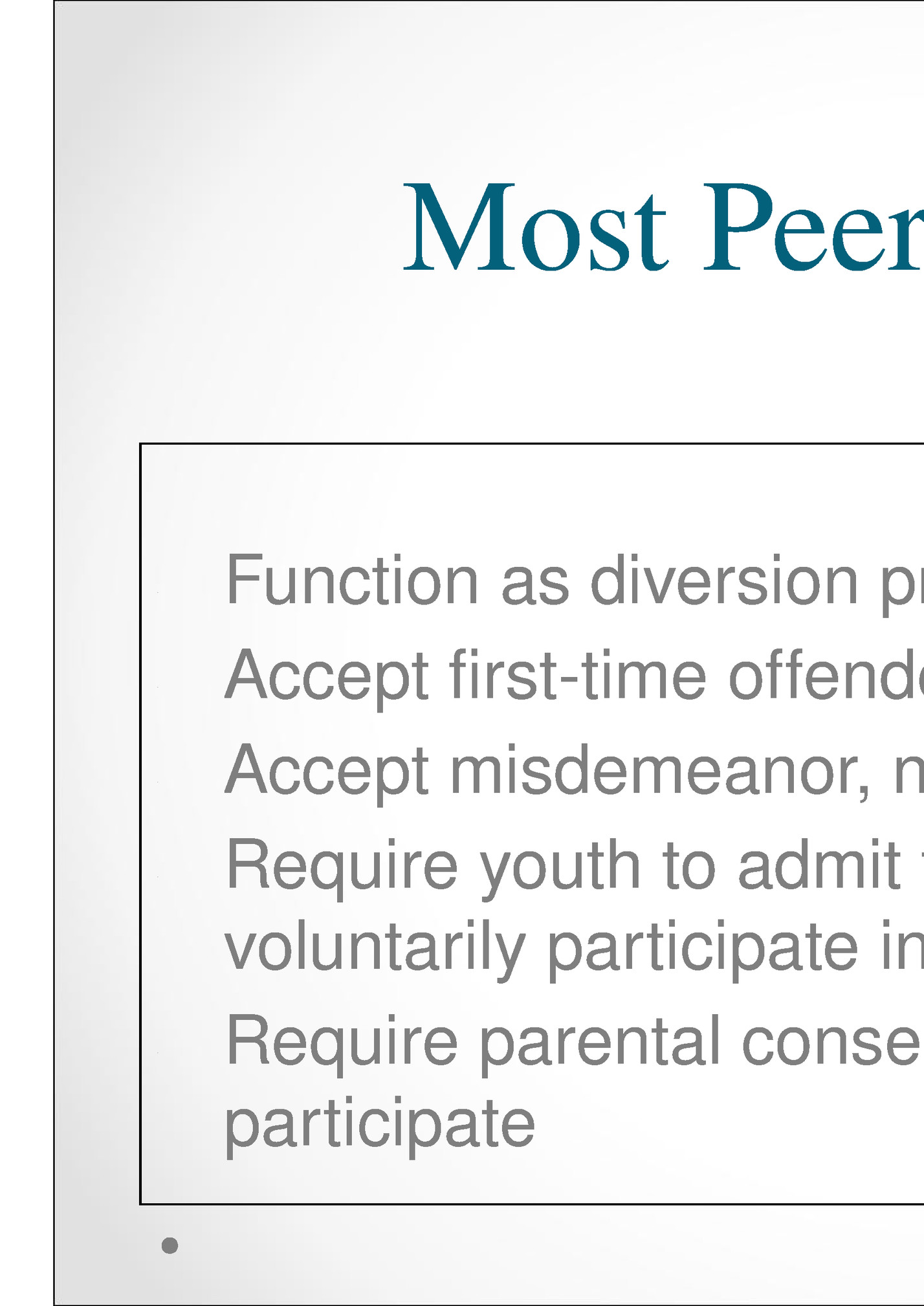
Fleepit Digital © 2021